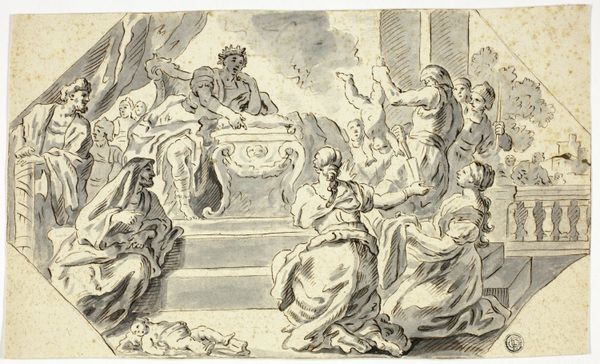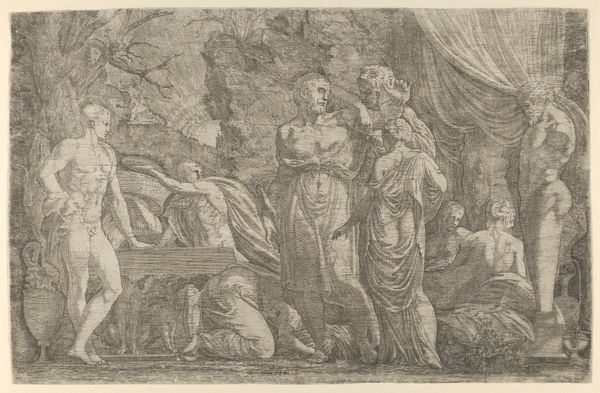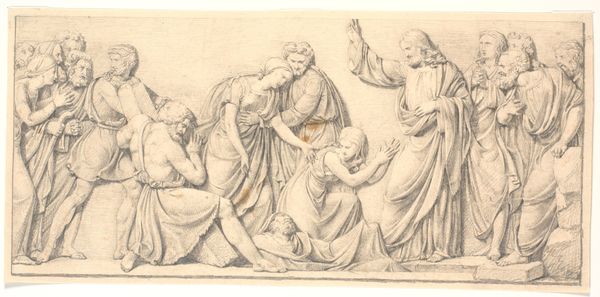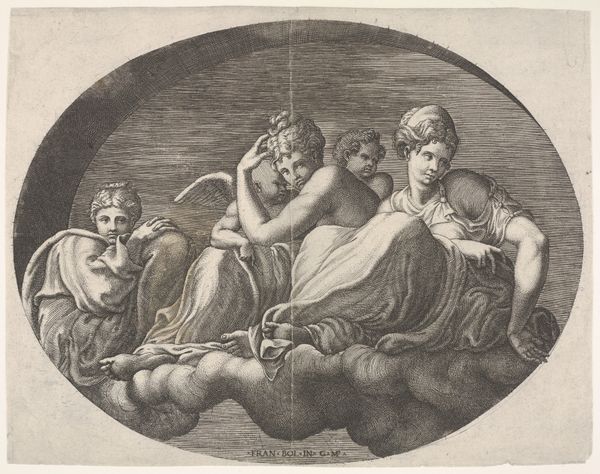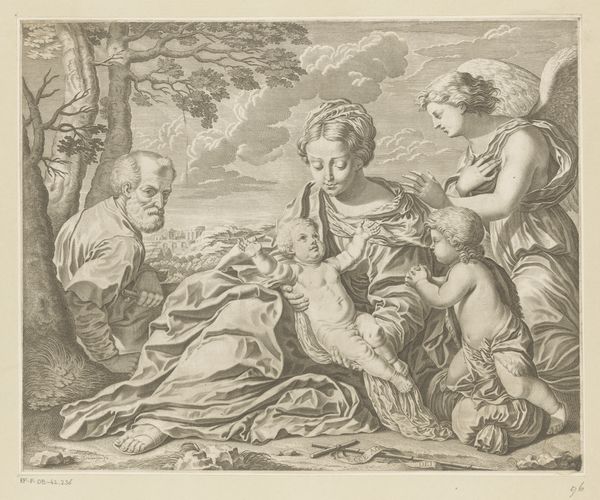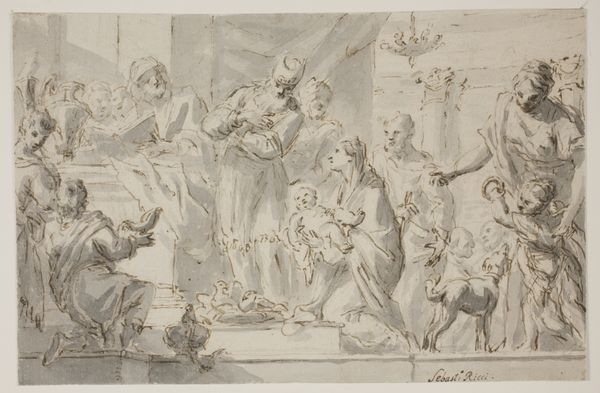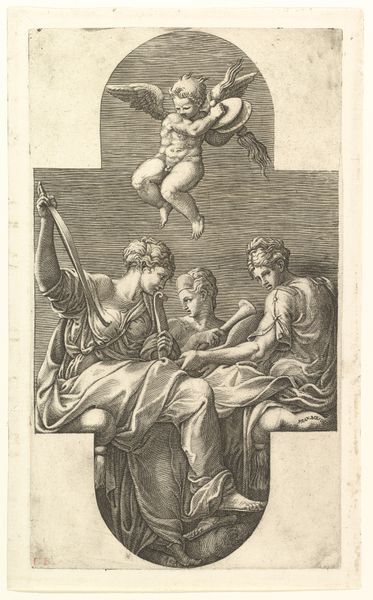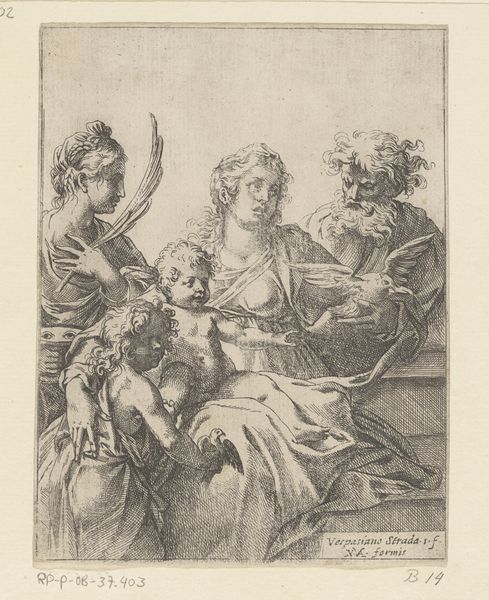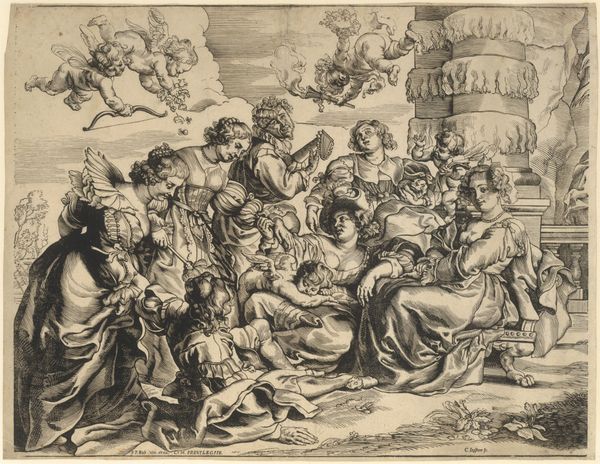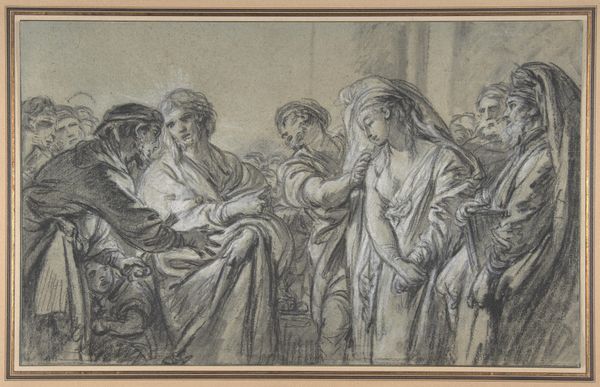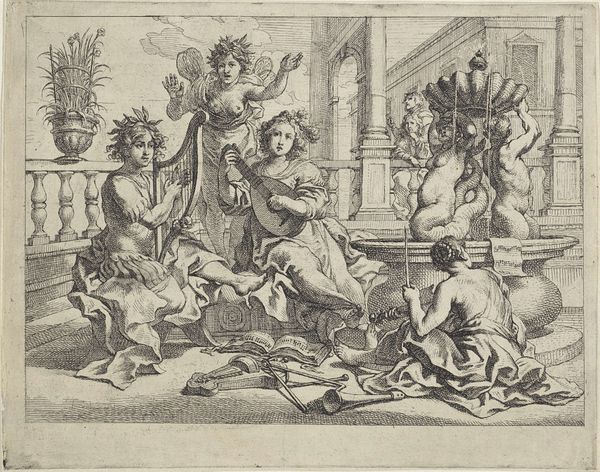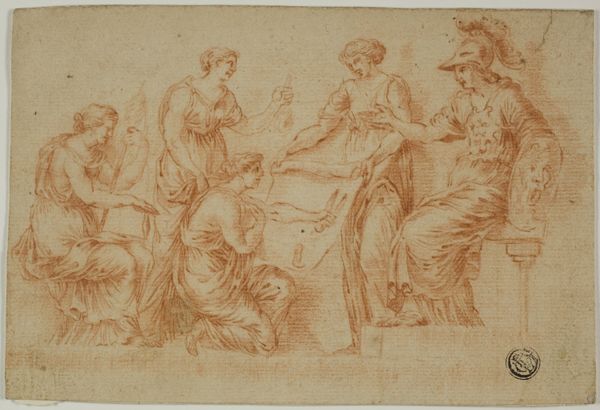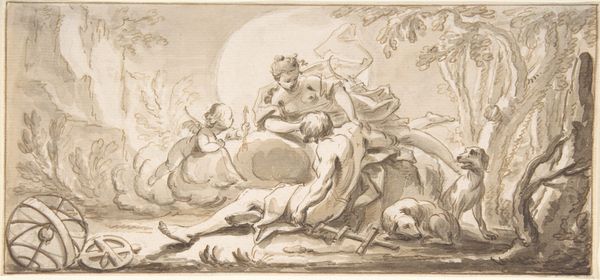
engraving
#
portrait
#
allegory
#
baroque
#
classical-realism
#
figuration
#
history-painting
#
engraving
Dimensions: height 122 mm, width 185 mm
Copyright: Rijks Museum: Open Domain
Editor: We’re looking at “Allegorie op de gerechtigheid,” or Allegory of Justice, an engraving by Louis Fabritius Dubourg from 1723. It feels very staged, like a theatrical production with Justice at the center. All of the elements feel very deliberate and balanced, even the placement of the putti! What story do you think this image tells about the cultural idea of justice at the time? Curator: This print is steeped in the Baroque era's embrace of allegory as a means of conveying complex social and political concepts. It is intriguing to note the role engravings like this had in shaping public opinion on abstract notions such as "Justice." Think of it as visual propaganda. How do you think the artist attempts to position “Justice” in relation to other virtues, and more ominously, to injustice, in order to convey social and political power? Editor: I see Justice holding scales, a sword, but she is surrounded by classical figures, and…tortured people. Maybe the message is that justice is a complex interplay between ideal virtues, power and grim realities? What are the figures besides Justice representing? Curator: Absolutely. The inclusion of defeated figures embodies defeated "injustice." But are they truly defeated if their images circulate widely through prints? The institutionalization of justice is only strengthened if reminders of injustice are ever present. Isn’t it interesting to consider that this print served to reinforce the *idea* of Justice just as much as it demonstrated any tangible enactment of justice in the world at that time? How would an image like this be seen in homes or public spaces? Editor: So, maybe it’s less about real-world justice and more about promoting the *concept* of justice as a form of social control? Something like "obey, or else"? I hadn't thought of it that way. It makes the putti a bit less cherubic, actually. Curator: Precisely. Looking at art from the past gives us critical tools for interpreting the systems of power and control that influence us still today. Editor: Definitely! This engraving gives a fresh, if unnerving, perspective. I will never be able to see Justice as a completely unbiased virtue ever again!
Comments
No comments
Be the first to comment and join the conversation on the ultimate creative platform.
